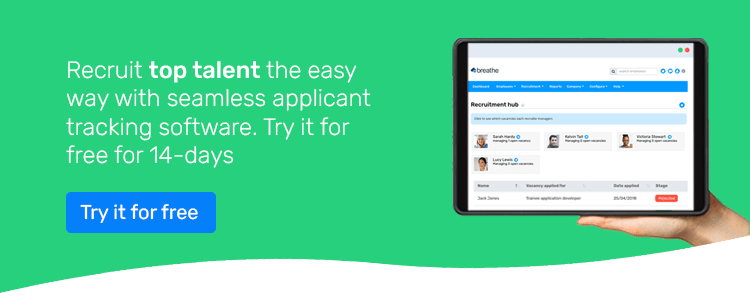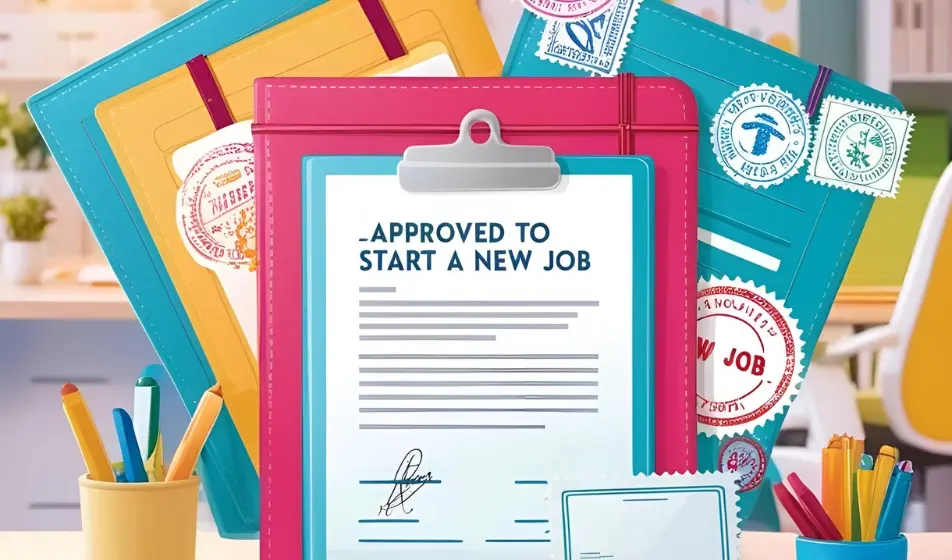When did you last read your own job description? Do you know when it was last reviewed?
Have you ever thought about what a recruitment process without traditional job descriptions looks like?
In this blog, we talked to Robert Burden, Managing Consultant of Kane HR, to gain insight into whether job descriptions are still relevant in today’s recruitment landscape.
We also offer some creative alternatives to job descriptions, and Robert shares his top tips to optimising your recruitment process for your SME – including how to manage unconscious bias.
Skip to:
Are your job descriptions stuck in a recruitment rut?
We wanted to understand what challenges SMEs face around job descriptions. We know the burden that traditional recruitment practices can put on HR teams (especially with fast-paced, evolving recruitment markets). Robert shared his thoughts:
“Clients can definitely get stuck in a rut, especially when it comes to job descriptions. We often see a lack of adaptability amongst SMEs – the rigid mindset of ‘this is the way it’s always been done.’ The problem with never changing the way job descriptions are written or managed is that it can hurt the business’ ability to attract diverse talent. Sticking with the status quo could mean overlooking new talent pools to help fill vacancies.”
Relying on outdated templates (that may have served you a decade ago) is another common mistake. When was the last time you reviewed the format of your job descriptions?
“Using the same templates to create job specifications might have been appropriate for your SME 15 years ago – but if you’ve not made changes since then, they’re definitely not fit for purpose,” Robert advises.
“If you think about the entire lifecycle of a role today – we all know that jobs have to – and should – grow. If you’re not updating your job descriptions (or the templates you create them with), you’re not evolving your recruitment practices to align with the way roles change.”
Job descriptions: the pros & cons
The CIPD details the purpose of job descriptions as “providing an overview of the role, including responsibilities and objectives. It can also provide clarity during induction & later on, performance.”
Here are the pros & cons of why job descriptions still add value, along with considering how they might not be serving HR.
Why are job descriptions important?
-
“Job descriptions are a great foundation for a role and set expectations. They align candidate skills & qualifications with the business’ needs,” according to Robert.
They can also be a useful tool for organisations in working out exactly what skills & expertise they need within their business.
-
If an employee applies for a promotion or pay rise, job descriptions can be a useful reference point for how responsibilities have developed over time.
-
We can’t discount applicant expectations – most people expect being able to view a job description & attempt matching their own skills against those specified.
Disadvantages of job descriptions:
-
Even the best-written job descriptions can sometimes be restrictive, or even unrealistic. In some cases, they can even function more like an employer’s wish list & can be misaligned. For example, specifying a strict number of years’ experience can be limiting & prevent good applicants from applying.
-
“Traditional job descriptions can be static and lack agility – they don’t capture the nature of modern work,” according to Robert, who warns against preventing flexibility. “Progression could be impacted if job descriptions are written in a rigid, task-driven manner.”
-
Updating job descriptions can be an admin burden for HR, Robert advises. “When HR is so busy, it’s difficult to keep job descriptions up-to-date.” And most job descriptions are nearly always out of date – most people perform more duties than their job description details.
Typically, descriptions don’t – and can’t – include everything covered in a job. Soft skills such as communication are often invaluable to most roles, but are rarely listed in a bullet-pointed summary.
Thinking outside the box: job description alternatives
It might be worth asking yourself if job descriptions are actually useful for your SME, or whether something different might work? You can still provide prospective employees with an overview of their role, without sticking to traditional job descriptions.
Robert warns of the dangers of restrictive job specifications. “If people are just working to job descriptions and in a task-focussed mindset, this has the potential to seriously stifle an organisation’s development and growth.”
Outcome-oriented focus
To prevent this, Robert believes SMEs should focus on key competencies and skills for roles instead. “Outcome-oriented descriptions allow employees the freedom to craft their roles. Flexibility in this way means that employees have more of a part to play in shaping their careers – this is also known as job crafting.”
An example of this could be along the lines of:
"Join our dynamic team as an HR Assistant, playing a vital role in driving HR excellence. Your focus will be on delivering exceptional support across the employee lifecycle, streamlining processes, and ensuring compliance with policies and regulations.
Collaborate with the HR team to implement innovative talent acquisition strategies, fostering a diverse and inclusive workforce. Contribute to employee engagement initiatives, providing a positive and thriving work environment. Your organisational skills and attention to detail will be instrumental in managing HR records and data accurately.
Embrace this opportunity to make a meaningful impact on our company's success and the growth of our talented team."
Clearly specifying how candidate skills will create the desired outcomes focusses more on the details, rather than experience-based requirements, and allows people to envision a potential role within your SME.
Allowing employees freedom with crafting their job roles is beneficial for everyone. Netflix famously released a culture deck, detailing how they hire & reward employees. The slide deck was applauded for its ingenuity, along with Netflix’s philosophy of ‘people over process’.
Keeping your end goal in mind with recruitment (rather than getting bogged down in the process) can be liberating.
5 alternatives to traditional job descriptions:
1. The candidate pitch
Appeal to candidates with your company mission, values & goal – essentially pitching a role to potential candidates as if they were investors. This could be achieved by creating a slide deck (similar to Netflix’s culture deck).
For example, the text could read something like:
Embark on a transformative journey as an HR Assistant at [company name], an investment in your growth and potential. Join our innovative team, pioneers in shaping a thriving work culture.
Your role will be pivotal, driving excellence in talent acquisition and nurturing. Collaborate with visionary leaders to implement cutting-edge HR strategies, fostering diversity, equity, and inclusion. Unleash your potential to streamline HR processes, using data-driven insights to enhance employee engagement and satisfaction.
Together, let's create a dynamic workplace where every individual thrives, ensuring individual and team success. Embrace this opportunity to invest in your career and make a lasting impact.
2. What about using video?
Robert advises SMEs to really think outside the box. “Don’t be afraid to create multimedia-based job descriptions. We know that video is everywhere now – what about putting a short video together? Presentations showcasing the role and its requirements can work well, too.”
Remember to improve accessibility by adding subtitles to any videos you create, and that short videos (ideally around 30 seconds to a minute, maximum) will work best to keep your audience engaged.
3. Get creative with role requirements
Consider the type of role you’re trying to hire – is there something practical you can use in the field you’re recruiting for? Perhaps you could set a task like a writing exercise or create a task in the form of a puzzle/game if you were hiring for a technical or problem-solving role.
“If it’s a creative role, think about what’s visually appealing and dynamic, that might really attract someone in that field,” Robert mentions.
“This is often a win-win scenario, as you’re really tapping into the right candidates for the position – and making your SME stand out from the crowd.”
4. A day (or a week) in the life
Creating a ‘day in the life’ profile can be an effective way to engage candidates. Robert believes this helps potential recruits to imagine themselves in the role.
“A typical profile of ‘a week in the role’ really allows insight into the job – along with any potential challenges. It lets the candidate assess their own fit into the role and the company’s culture, too.”
5. Widen the scope – and think even bigger
You could provide a flexible, broad description or summary of where you see the role going & the hats a successful candidate might wear.
Whilst still technically appearing as a job description, widening the scope in this way not only is honest & transparent with applicants about the evolution of the role (great for personal development) but also encompasses what they might do on a day-to-day basis in a more open way than static, boxed-in job descriptions do.
Essentially, you’re providing job expectations, rather than a traditional description.
How to avoid unconscious bias in job descriptions
It’s a good idea to make sure your job descriptions are working hard for you – and are as unbiased as possible – in whatever format you use.
Job descriptions can ensure fairness in hiring practices and can promote equal opportunities. By using non-discriminatory language and promoting equal opportunities, job descriptions have a role to play in equality, diversity & inclusion.
And it’s not just how job descriptions are written that can hurt your hiring, either.
“Unconscious bias is something we see in recruitment,” Robert advises. “This can influence job descriptions & recruitment practices. Whilst unintentional, SMEs can accidentally encourage a lack of diversity with biased language, or make assumptions based on certain demographics, for example. Don’t use generic hiring practices and consider the language you’re using – systemic bias can easily be present.”
But what can HR teams do to overcome unconscious bias? Robert shared the practical advice he offers clients.
“We encourage clients to firstly realise that unconscious bias exists, and to also be open to change. Regularly evaluate job descriptions and check they’re fit for purpose. Technology and data can help to make life easier with this – some clients have even used AI for the purpose of avoiding unconscious bias when creating or optimising job descriptions.”
Transparent job descriptions for your target audience
Robert shared some tips on what SMEs can do to ensure high-quality job descriptions -
“Vague, poorly-written job descriptions discourage candidates from applying – make sure you’re applying a clear focus and checking for basic things like spelling & grammar.”
The key piece of advice Robert has for SMEs is to ensure that they understand who the target audience of their job descriptions are. “Too often, clients haven’t understood who their audience is – they’ve based job descriptions on exactly what they want, rather than what the candidate wants.”
Considering who you’re aiming at when you put together a job specification will help find the right person. “Also, make sure you’re thinking about what candidates want, rather than just what you want [as an employer],” Robert shares.
“Feel free to collaborate internally, too – do you have a particular role you think would be good for a Millennial/Gen Z employee? You could ask someone already working for you if it sounds like a job they’d want to apply for, or offers the benefits they value.”
The importance of salary transparency
Robert advises that if used correctly, providing salary transparency in job descriptions can be powerful. “Ensuring that compensation is fair & equal can be an effective tool to help reduce bias.”
Being open about salary ranges for positions can save employers and candidates a lot of time, too. “[Salary transparency] can also improve the candidate experience, as it will save people investing time & effort in applications that don’t meet their salary expectations. This works both ways, too, when it comes to the time employers spend interviewing.”
The last thing employers want is for salary expectations to not align at the last hurdle. And being transparent around salaries from the beginning means the employer/employee journey starts off positively, too.
“Being honest in this way means you’re more likely to enhance employee satisfaction, and ultimately foster a culture of trust and integrity,” Robert adds. “We know first-hand from client experience that salary disparities can arise when candidates negotiate salaries based on prior compensation or personal circumstances. Having transparent salary ranges helps to avoid these tricky situations, along with promoting fairness & pay equity.”
Revitalised job descriptions for your ideal candidate
It comes down to what’s right for your SME. It’s worth considering whether job descriptions are serving you, or whether they’re a conventional box-ticking exercise that doesn’t set you apart in the competitive recruitment market. Has it always been done this way? Is that a good enough reason to keep things the way they are?
Still not sure whether job descriptions belong to the past? If you’re not ready to make the leap yet, you can ensure they’re optimised for your SME.
You could even go one step further and include a job mission statement – how the role fits into the organisational goals. This reinforces why this role is important to the business & creates a focal point.
Consider what work needs to be covered and re-write job descriptions to focus on the skills that matter most for the work – rather than experience or education.
If you decide to keep job descriptions, ensure they’re not just filed away on an employee’s digital document storage but are updated, reviewed regularly, and used in performance reviews. You can make job descriptions living documents, rather than static, stagnant files that are never looked at again after the applicant gets the job.
Breathe’s Recruitment tool can help you to streamline your recruitment process & reduce admin – whilst being cost-effective.
Find out how Breathe’s applicant tracking system can help you to save time & money by trialling for free for 14 days.
Robert Burden is Managing Consultant of Kane HR. Find out more about receiving HR advice, or joining Breathe's Partner programme.

Author: Aimée Brougham-Chandler
An IDM-certified Digital Copywriter (2023) & English Language & Literature graduate (BA Hons), Aimée is Breathe's Content Assistant. With 3 years' content marketing experience, Aimée has a passion for writing - and providing SME HR teams with solutions to their problems. She enjoys delving into & demystifying all things HR: from employee performance to health and wellbeing, leave to company culture & much more.






